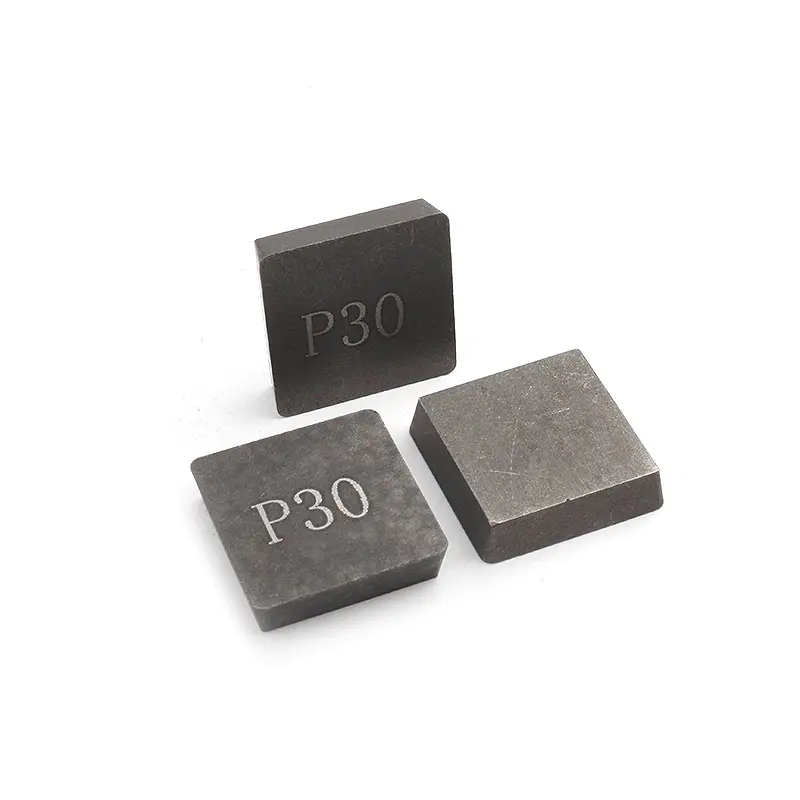2025-07-11
Selecting appropriate blades for masonry applications is an essential part of maintaining cutting efficiency and achieving clean results. Whether you are working with a cut stone blade for dimensioning large stone blocks or a carbide welding blade for shaping specialized profiles, understanding technical properties and practical considerations helps support accurate work while protecting tools and materials.

Material Composition and Manufacturing
Cut stone blades are produced using engineered steel cores and diamond segments designed for consistent cutting across a variety of stone types. These diamond segments are sintered onto the blade using controlled processes to create a bond that withstands high rotational speeds and repeated contact with dense surfaces. In comparison, carbide welding blades incorporate tungsten carbide tips fused to the steel body through welding techniques, allowing the blade to maintain hardness and shape retention when working with abrasive materials.
Manufacturing processes emphasize uniformity in segment distribution and secure attachment. This attention to detail reduces the possibility of segment loss or uneven wear, which can affect cut quality and increase operational costs over time.
Application Performance and Compatibility
A primary factor in selecting blades is matching the blade design with the type of material and the cutting equipment. For example, a cut stone blade is typically used in masonry saws or table saws with sufficient power to drive the diamond segments through hard stone. Operators need to confirm that blade diameter, arbor size, and rotational speed align with equipment specifications to prevent vibration and premature wear.
Carbide welding blades are commonly used in applications where continuous exposure to mineral aggregates occurs, such as tile cutting, brick shaping, or light concrete trimming. Their welded carbide edges deliver extended service life and maintain sharpness in situations where softer blades might require frequent replacement. Compatibility with saw guards and dust extraction systems also contributes to safe, efficient operation.
Cutting Techniques and Operating Tips
Proper cutting technique directly affects the performance and final results of the blade. At the beginning of each cut, the blade should be guided slowly into the material to avoid chipping and unnecessary friction. Maintaining a steady feed pressure and proper blade speed helps prevent overheating, which can damage the blade's bond and the material surface.
In wet cutting, maintaining a steady stream of cooling water helps remove debris and control heat buildup. In dry cutting, operators should limit continuous operation time and allow the blade to cool periodically. These practices can extend the life of the blade and improve cutting consistency throughout the job.
Inspection, Maintenance and Storage
Regular inspection of stone cutting blades and carbide welding blades can reveal early signs of wear, cracks or imbalance in the blade head. Checking the blade height and blade tension before each use can help improve operating safety. If the blade wear reaches the manufacturer's threshold, it is recommended to replace it to avoid sudden breakage.
Proper cleaning after use can remove mud or residue that can harden and damage the blade surface. Storing the blade vertically or hanging it on a designated rack can prevent it from deforming and ensure that it remains usable for future projects.
Considerations for Precision Masonry
Precision masonry often requires smooth edges and precise dimensions. To this end, a high-quality blade combined with the right technique is essential. In architectural stone installations, joints must be precisely aligned, and the uniform head height and consistent performance of stone-cutting blades facilitate adjustments during installation.
Carbide-welded blades lend themselves to custom shaping, allowing fabricators to create contours or chamfers while maintaining edge integrity. This feature is particularly useful on restoration projects or decorative elements that require specific contours.
Evaluating Lifetime Costs
While the initial purchase price is often a consideration, evaluating the total cost over the life of the blade can provide a more accurate reflection of value. Stone-cutting blades with higher-grade diamond tips may cost more upfront, but will generally provide more cutting meters before replacement. Likewise, carbide-welded blades can reduce downtime by extending replacement intervals. Recording blade performance metrics can inform future purchasing decisions and help more accurately predict replacement schedules.
Integration with Modern Production Methods
As masonry operations increasingly adopt automated or semi-automated equipment, blade performance must keep pace with production needs. Many modern saw blades are equipped with variable speed controls, digital monitoring, and integrated cooling systems to help optimize saw blade usage. Selecting saw blades that are compatible with these features can help achieve steady production and consistent quality.
Clearly documenting saw blade usage, material type, and cutting conditions allows operators to adjust strategies to specific projects. This approach helps improve material processing efficiency and reduces the potential for production delays.
With proper selection, operation, and maintenance, stone cutting saw blades and carbide welded saw blades can achieve precise, consistent masonry work in a variety of applications.